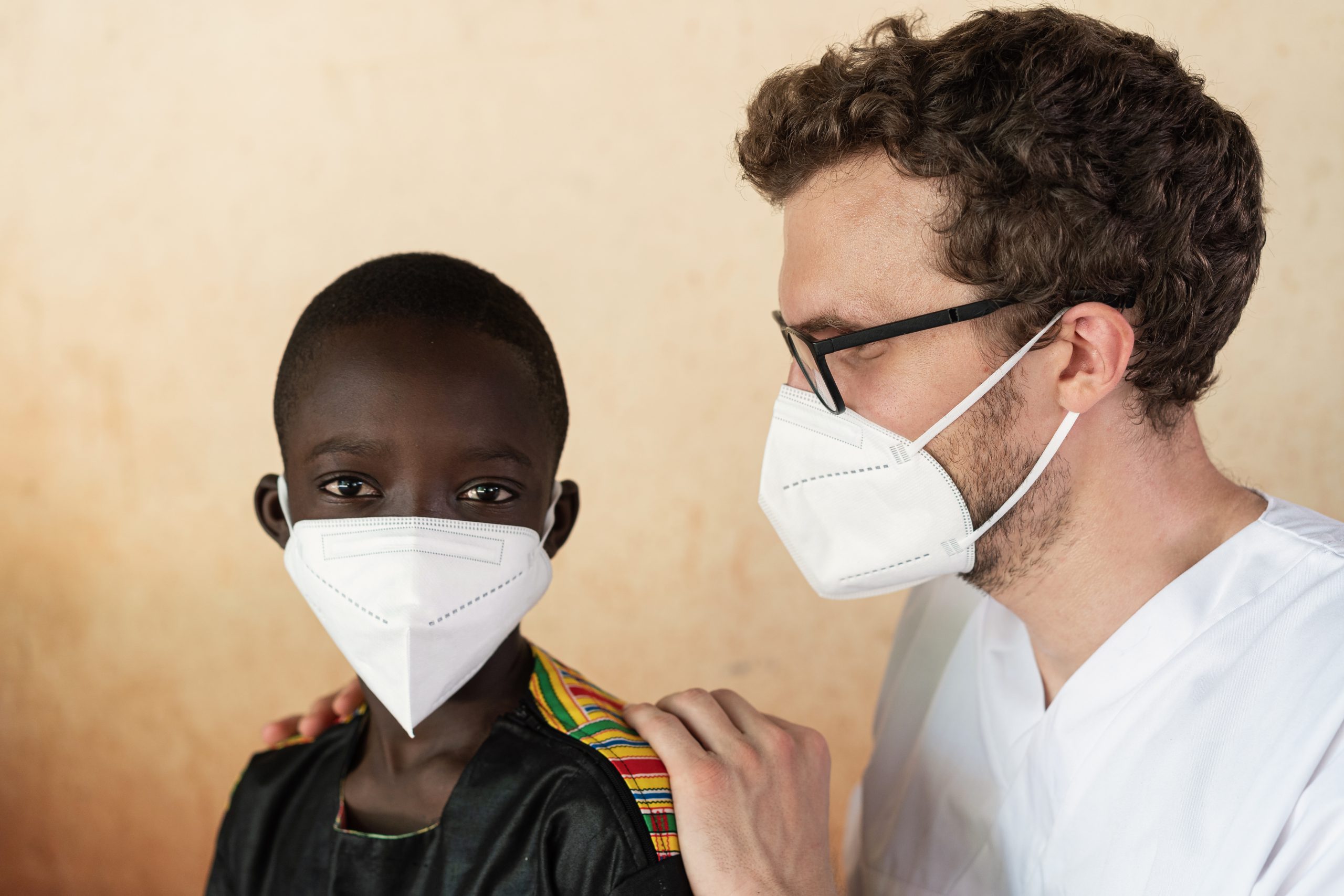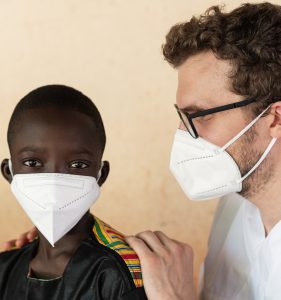A discussion of the New Humanitarian’s first-ever fictional story about how the aid sector may look in 30 years from now, by Malka Older.
In August this year, the New Humanitarian published its first-ever fictional story, “Earthquake relief. Mexico. 2051. A glimpse into tomorrow’s humanitarian world,” by Malka Older. The short story takes readers to post-disaster Mexico in 2051 and explores how a bottom-up humanitarian disaster response could look if money constraints and non-governmental organizations were relics of the past.
In Older’s story, local community members are in charge, human needs are prioritized over short-term economic efficiency, and global solidarity is a reality at last. All seems good and well on the surface. This article is the first in a three-part series that aims to examine Older’s 2051 vision for a better disaster relief system. In this first past, humanitarians are in focus. Who are the people who rush to provide aid in 2051? Will they be less WEIRD – Western, Educated, Industrialized, Rich and Democratic? The WEIRD acronym was introduced by Paul Currion in a 2015 column titled “Why are humanitarians so WEIRD?,” published in the New Humanitarian.
Before you read on, I suggest that you read Older’s fictional story in the New Humanitarian, if you have not done so already.
Are humanitarians the same in 2051?
One central character in Older’s story is Sana Callon. She is an international consultant focused on disaster relief who travels to Mexico to lend a hand to local community members as they run the project of rebuilding their damaged homes. Sana is based out of Beirut and used to “used to work for an organization that did this (humanitarian) work – an NGO.”
When Sana tells the others in the shelter where she works that she used to be employed by an NGO “some people roll their eyes.“ Yet no one seems to have a problem with the fact that Sana used to be an active part of a construct that the international community has jointly agreed should be abolished.
When colonialism was abolished and the development sector grew in its wake, many colonial officers shifted into development work. In her book International Aid and the Making of a Better World: Reflexive Practices, Rosalind Eyben tells the story of how her ex-husband, a previous colonial officer who had studied colonialism at the university, retroactively changed his resume to state that he had a degree in development studies (Eyben, 2014.) Let me be clear, I do not compare colonialism and humanitarianism in any way. A discussion of what colonial constructs you can find in today’s humanitarian sector is beyond the scope of this article. What I am trying to do, is to question how much a sector is likely to change as long as it is operated by the same people. A growing body of ethnographic scholars argues that that individual agency is essential for how development aid programs are conceptualized and delivered (Eyben, 2014, p.14.) Sana is, of course, only one person. She may be an exception in 2051. However, much evidence points towards that this is not the case.
Secure funding but more precarious work
In Older’s 2051, every government – local, regional, national – is required to put aside a minimum percentage of their budget for emergencies. When an emergency overflows the local budget, the regional one is automatically pulled in, then national, and then the global. Mandates, results-driven development, and short-term and targeted funding have all been abolished.
In short, in Older’s 2051, community members responding to disasters do not have to worry about money. If they need something, they buy it. In fact, they – though a community committee – have the last say not just about how money should be spent, but about all decisions concerning the disaster response in their area.
Emphasizing that the community committee is in charge, Sana repeatedly points out that its members can tell her to leave whenever they want. She’s there to lend a hand as long as they need her and want her there. Inherited power dynamics may, of course, in practice, make it difficult for members of some local communities to speak up against visiting expats or even ask them to leave. Still, all job security Sana has is a “temporary alignment contract. No commitment…” From what we learn about 2051’s humanitarian work by Sana, it seems like a career in the sector is a textbook example of precarious work.
Gone are the NGOs and with them the chance of having employment it seems. Instead, freelancing humanitarians are paid out of local funds only when they are needed. At least there is “plenty of work out there” for the people who like the work if they are “also in a position to travel.”
Can we expect the aid industry to be more diverse in 2051?
Sana may not be from a western country (though the story does not say if she is a native to Lebanon or only temporary based in Beirut), but much points to that Sana and her humanitarian colleagues are no less WEIRD (maybe even the opposite) in 2051 than in 2021.
Sana is well-versed enough to navigate diverse international crises situations as an individual consultant, meaning she is likely to have a university degree or other experiences that render it fair to call her well educated. Also, her local fund pays for her to travel the world to keep her skills up to date. She is worldly, and either she makes an unbelievably good salary as an international relief consultant or (more likely) there are other reasons why she can afford (both literally and figuratively) not to worry about money as she repeats the mantra, “you can get rid of us internationals whenever you want.” Lastly, Sana is an advocate of mutual aid – she would most certainly vote blue if she was allowed to vote in a U.S. election. Nothing in the story point to Sana being an expectation to other humanitarian workers.
It does not get much WEIRDer than this …
Resources
Eyben, R. (2014). International Aid and the Making of a Better World: Reflexive practice (1st ed.). Routledge. https://doi.org/10.4324/9780203077610

